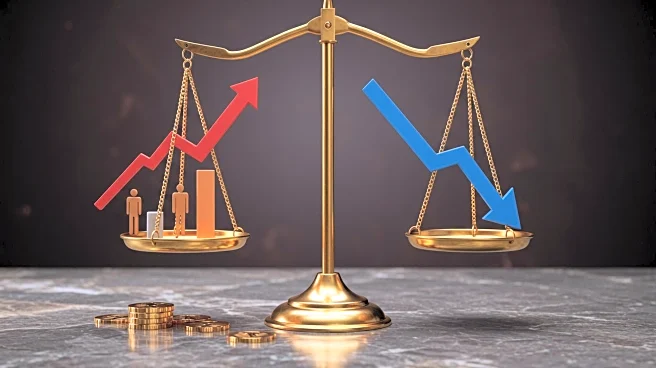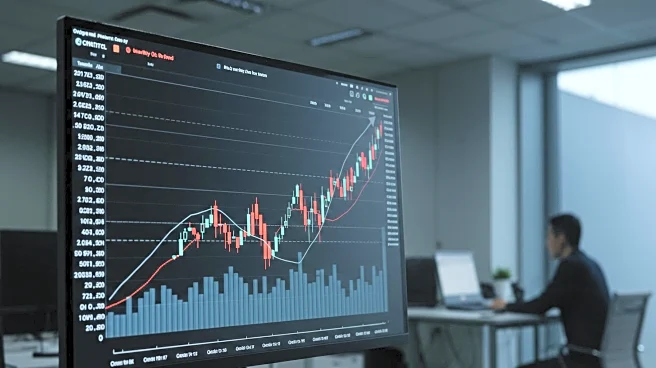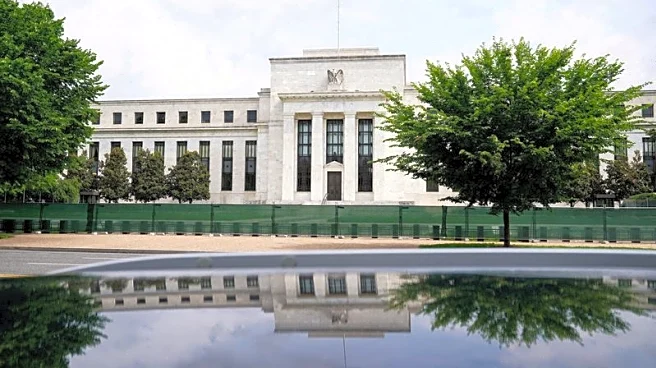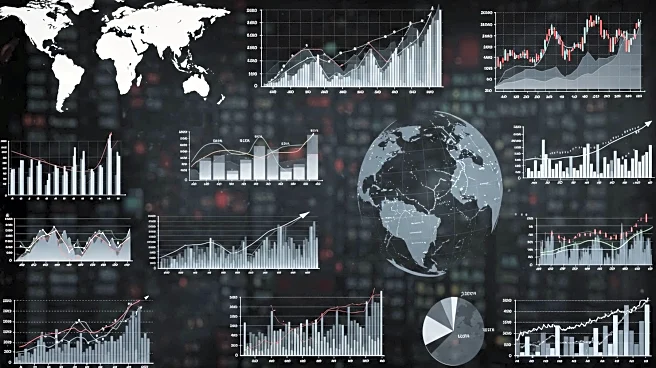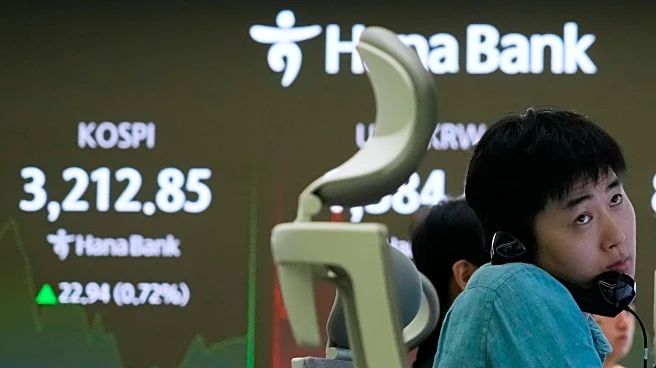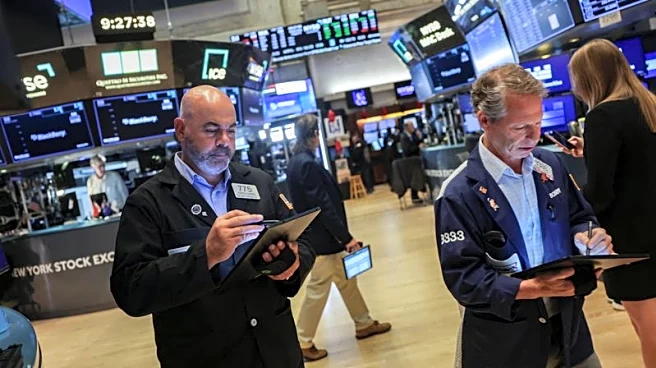What's Happening?
Recent data indicating a significant rise in U.S. producer prices has caused a ripple effect across global bond markets. The producer prices index increased by 0.9% in July, surpassing the expected 0.2% gain. This unexpected inflation surge has led to a sell-off in government bonds worldwide, affecting markets from Germany to Japan. In the U.S., the Russell 2000 index dropped by 1.2% following the data release, while the S&P 500 index is projected to fall by 0.4%. The two-year Treasury yields, which are sensitive to monetary policy changes, rose by 4.3 basis points to 3.73%, indicating a shift in expectations regarding the Federal Reserve's interest rate cuts. Despite previous anticipation of a significant 50-basis-point rate cut, these expectations have diminished following the inflation data.
Why It's Important?
The rise in U.S. inflation has significant implications for both domestic and international financial markets. Higher inflation can lead to increased borrowing costs, affecting consumer spending and business investment. The Federal Reserve's potential response to this inflationary pressure is crucial, as it could influence economic growth and stability. If the Fed opts for smaller rate cuts or delays them, it could impact sectors reliant on low borrowing costs, such as housing and consumer goods. Additionally, the global bond market's reaction underscores the interconnectedness of economies, where U.S. economic indicators can influence financial conditions worldwide. Investors and policymakers will closely monitor these developments to gauge the broader economic impact.
What's Next?
The Federal Reserve's upcoming decisions on interest rates will be pivotal in shaping market expectations and economic forecasts. Market participants will be watching for any signals from the Fed regarding its approach to managing inflation and supporting economic growth. Additionally, geopolitical factors, such as the upcoming summit between President Trump and Russian President Vladimir Putin, could introduce further volatility into the markets. Investors may also look for safe-haven assets like gold, although its price recently edged lower despite the inflation concerns. The evolving economic landscape will require careful navigation by both policymakers and investors.
